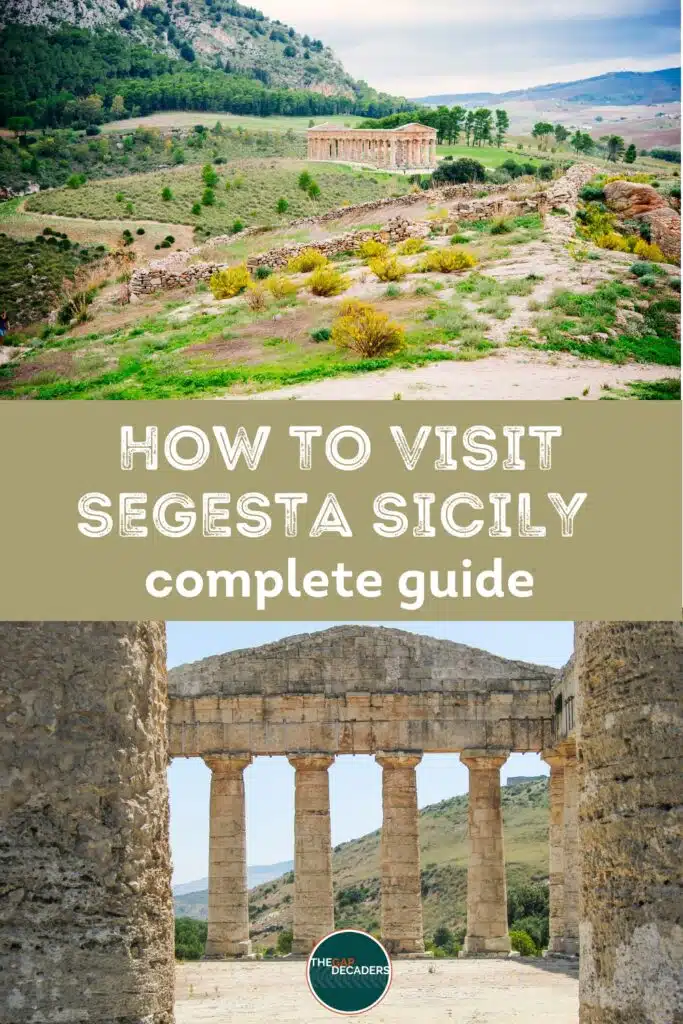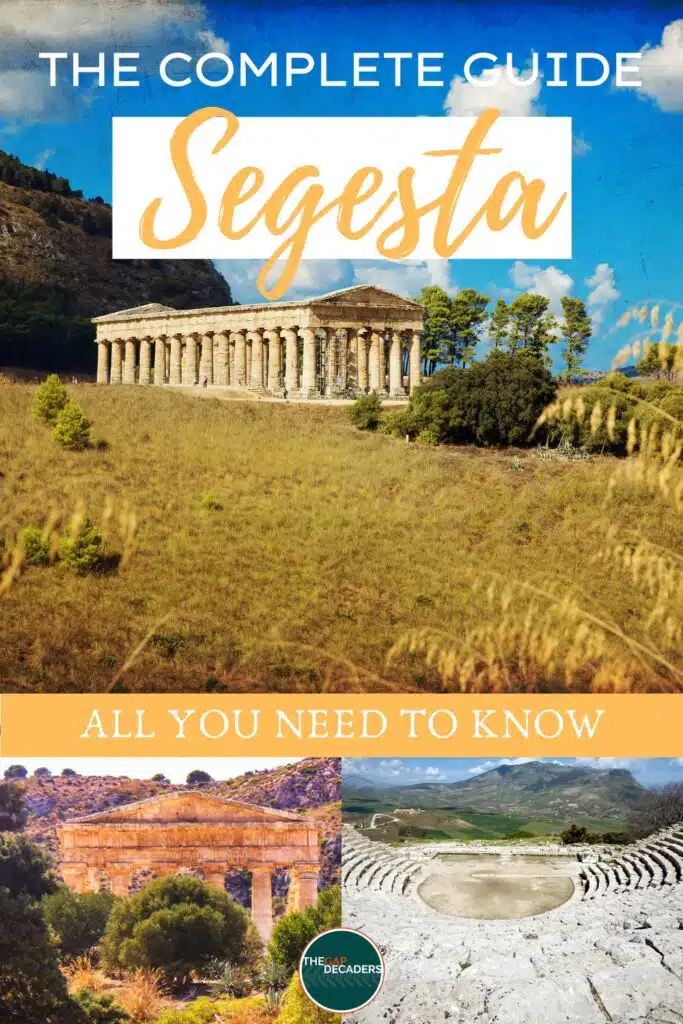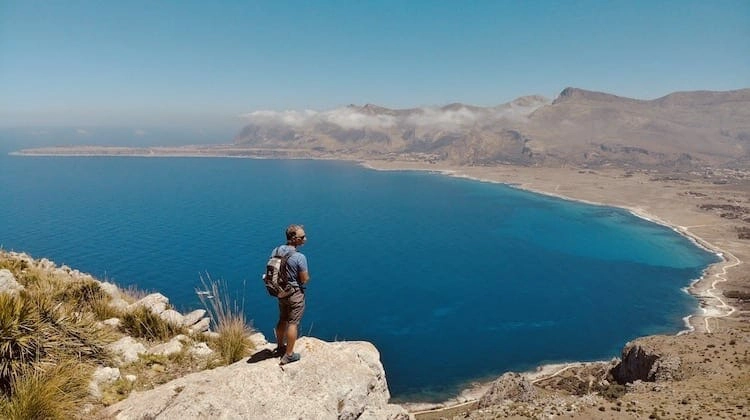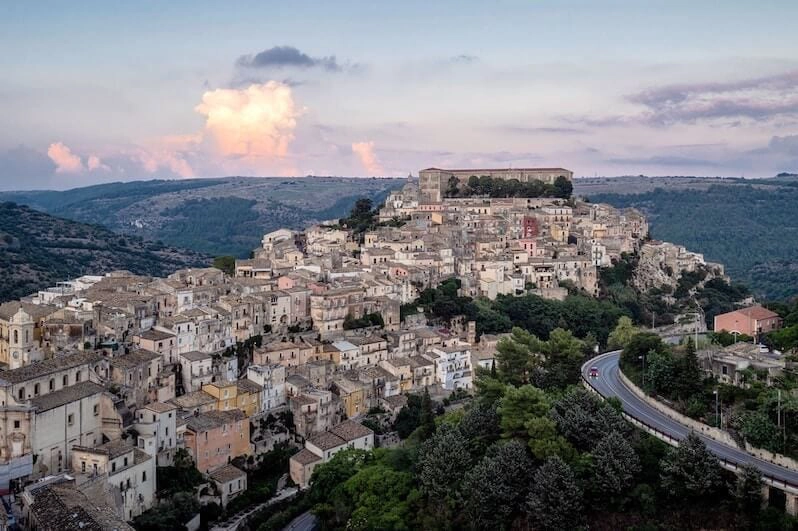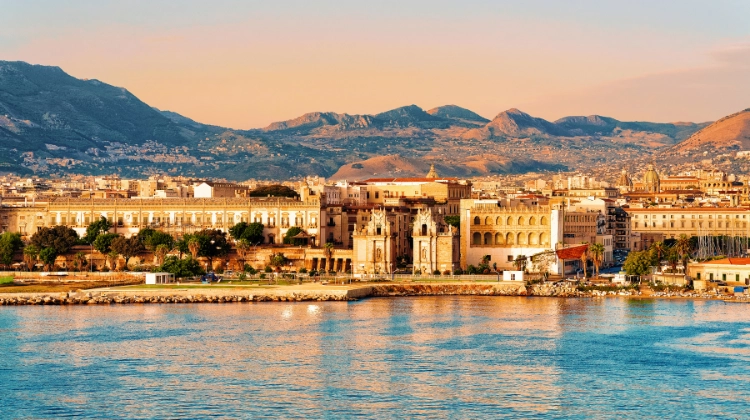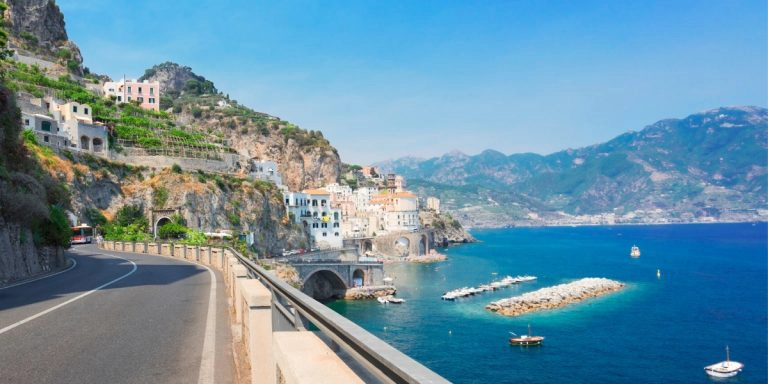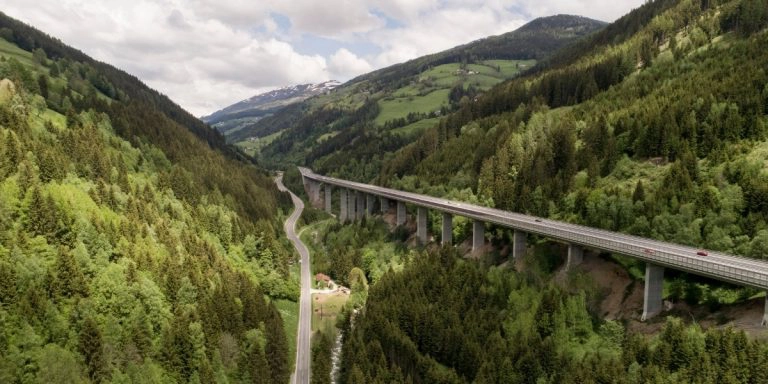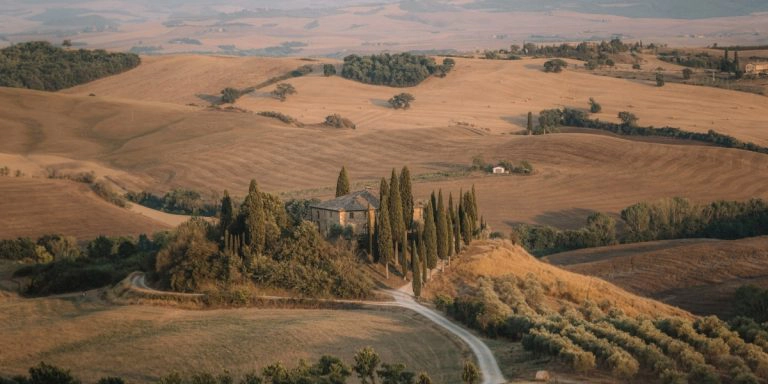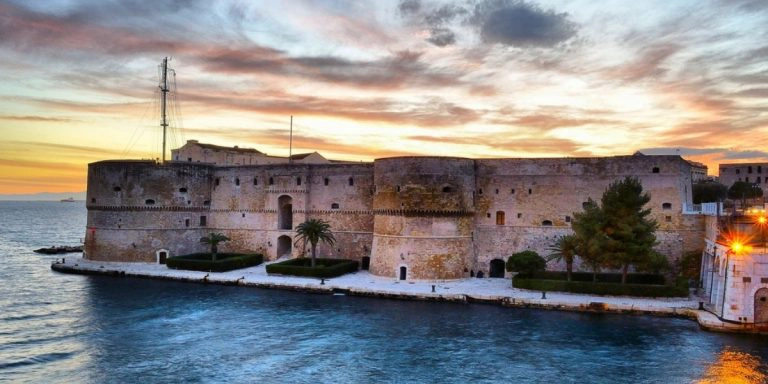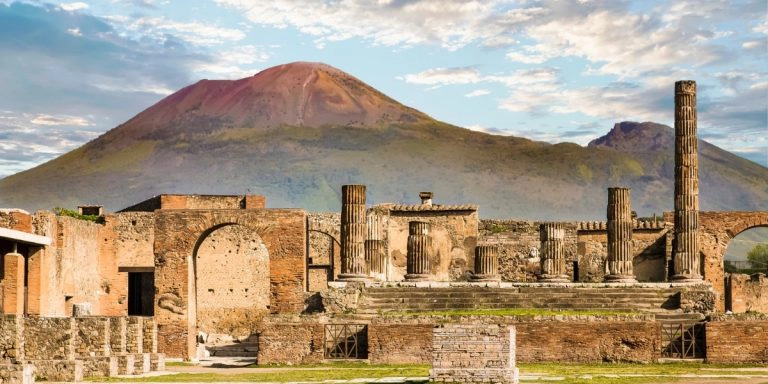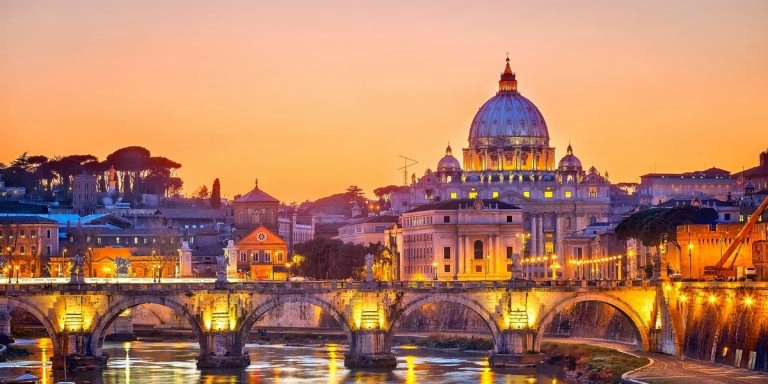This post may contain affiliate links, from which we earn an income.
Visiting the Temple of Segesta
An absolute must-see on any trip to Sicily, the ancient Greek temple and Roman amphitheatre at Segesta are simply breathtaking. High up in a mountainous area towards the west of Sicily, the Segesta archaeological site is less crowded than the Valley of the Temples but no less spectacular.
Our guide has all the information you need to know about how to visit this wonderful site of ancient Greece, including information about getting to Segesta by car or public transport, parking, visiting the site and other Segesta travel tips.
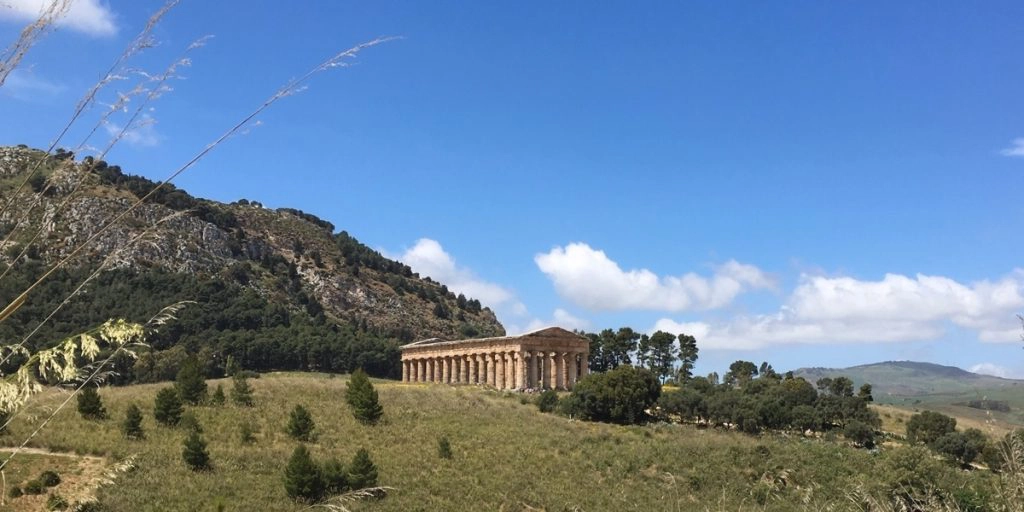
Things to Know About Segesta
- Segesta was one of the major cities of the Elymians, one of the three indigenous peoples of Sicily.
- After the first Punic War and by the time Segesta reached the peak of its wealth and power in the 5th century BC, it controlled one of the most important mints in Magna Graecia and featured an enormous market that attracted traders from all over Europe.
- Even though it was in Sicily Segesta was culturally Greek and allied to Athens during the fifth century BC.
- The well-preserved Doric temple was initially constructed at the foot of Mount Barbaro around 417 BC, at the time when Sicily was drawn into international conflicts between Athens, Sparta, and Carthage. The Tempio di Segesta represents the ancient city at the end of its zenith.
- The temple was never finished. This is known because the 36 Doric columns are of a rough finish because they were not “fluted”, and the outer entrance steps are missing.
- The original city of Segesta was at the top of Mount Barbaro, where the amphitheatre is also located.
Surprisingly, Segesta is not a UNESCO World Heritage Site. There are seven UNESCO sites in Sicily;
- The live volcano of Mount Etna, lording over the city of Catania.
- The archaeological area of Agrigento and the Valley of The Temple.
- Villa Romana del Casale, a large and elaborate Roman villa near the town of Piazza Armerina.
- The Aeolian Islands of Isole Eolie, in their entirety.
- The late Baroque towns of Val di Noto in southeastern Sicily.
- Syracuse, a historic city known for its ancient ruins.
- The rocky Necropolis of Pantalica and Arab-Norman Palermo and the Cathedral Churches of Cefalù and Monreale.
Is this your first time visiting Italy? Get all the information you need in our Italy Travel Guide, including what to pack, the best time of year to go, getting there and practical tips to help you have the best trip!
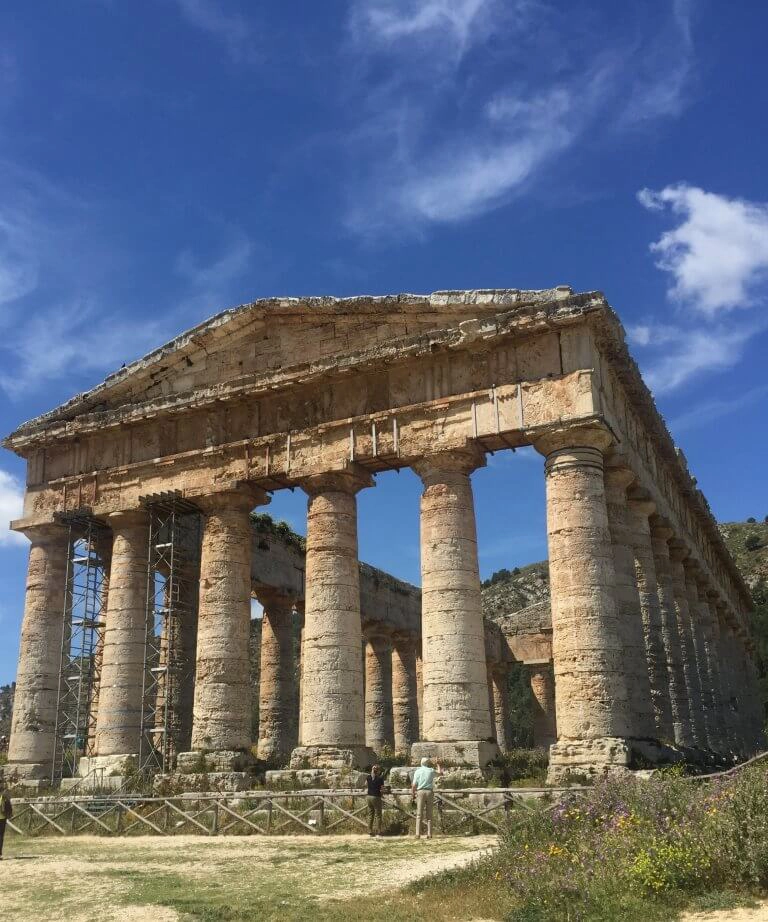
What to See at Segesta Archaeological Site
The Temple
The Greek Doric temple of Segesta is almost complete as you see it externally. The wooden and tile roof is missing, although scholars are undecided as to whether this was deliberate. None of the interior structure survives, and may never have been completed as the inner foundation works were still in progress when the project was abandoned.
The temple was built using a creamy travertine from Alcamo, northeast of Segesta. There are six columns on each façade and 14 columns along the length, all standing on a three-and-a-half step base, and each column stands 9.33 meters high. The dimensions of the temple are 26 x 61 metres.
The Doric architecture has been partially restored, with steel bars used for support and materials like rubber and resin used to replace missing pieces. The entire temple has also been treated with a water-resistant solution to ensure its continued preservation against the elements.
Even so, it’s easy to look at this temple as a visitor, rather than a scholar or historian, and imagine how it must have looked as it was being built and almost finished.
The Theater
The theatre, perched on the rocky summit of Mt. Barbaro enjoys a breathtaking view of the Gulf of Castellamare. First built from the late 4th to early 3rd century BCE, the theatre as it is seen today dates to the 2nd century BCE. This is not a Greek theater but a Roman one!
Originally it had 29 rows of seats divided vertically into seven sections by access steps, with capacity for 4,000 spectators, and continues to host theater events and Greek dramas throughout the summer months.
RELATED POST: Southern Italy: Discover the Best 33 Places To Visit
Getting to Segesta
Public Transport
Segesta is in the Calatafimi Segesta commune, and whilst there are regular buses from Palermo to Calatafimi, the only way from there to the archaeological site is by walking the 6km.
Otherwise, there is very limited public transport to Segesta and we advise that you check online prior to making plans.
There is a bus to Segesta from Via Balsamo near Palermo’s train station. This service runs Monday to Saturday from April to October. Buses only run on Mondays from November to March.
Buses do not run on Sundays or public holidays (of which there are many, check them out here.)
Segesta Day Trips
If you are staying in Palermo the optimum way to visit is to take a tour. We recommend this highly rated day trip from Palermo, which not only takes in Segesta, but the fascinating salt pans of Trapani and the beautiful hill-top town of Erice.
Own Transport
If you’re road tripping Sicily, Segesta is a must-see on your itinerary as one of the finest preserved temples in Europe, if not the world.
The Segesta exit is clearly marked off the A29D autostrada between Trapani (32km to the west) and Palermo (76km to the east). Parking is within two minutes of this exit.
When To Visit Segesta
The archaeological park at Segesta is open all year round. Visit in May and June for stunning wildflowers, and in summer for lush green meadows around the site. Winter may be chilly, but it will certainly be quieter and more peaceful.
Segesta opening times are;
- 27 March to 30 Sept – 9am to 7pm
- 1 to 31 October – 9am to 6pm
- 1 Nov to 28 Feb – 9am to 5pm
- 1 to 26 March – 9am to 6pm
The last admission is one hour before closing.
Sicily Travel Inspiration
Parking at Segesta
It is no longer possible to park at the foot of the temple. This is because the Parco Archeologico di Segesta who run the site, recognise that vehicle fumes so close to the ruins will have a long-term effect on their sustainability.
You will be directed to the official ‘park and ride’ for Segesta as you leave the autostrada. From here, you can catch a shuttle bus to the main entrance. The sign says it is 12km away, but they missed the decimal point…it is actually 1.2km away! The buses leave every 15 minutes or so.
To park and take the shuttle cost €5 for a car, €7 for a motorhome and €3 for a motorbike. This covers you for the whole day. You can also stay overnight in a campervan for €12, giving you a head start in the morning!
The best time to get there is about 8.45am to catch the first shuttle at 9am. Doing this will give you a few precious minutes of peace when you arrive at the temple.
Do not be tempted to park along the road or anywhere other than here …you will most likely be fined and moved on.
Visiting the Temple of Segesta
The bus will deposit you at the main entrance where you will queue for another ticket. The cost of entry is €6 and €3 for children and concessions (the only concession is EU citizens under 25).
You start from here with a short (five minutes) uphill walk to the temple. You can no longer walk into the temple as you were able to ten years ago. However, you can walk all the way around to look at the detailed architecture of the structure and marvel that the ancient Greeks were able to construct such a sublime and beautiful building.
You’ll want at least an hour to admire the architecture, take photos and soak up the peaceful atmosphere (at least anytime before 11am). After this, the site becomes busy with day trippers and the paths around the temple can become busy.
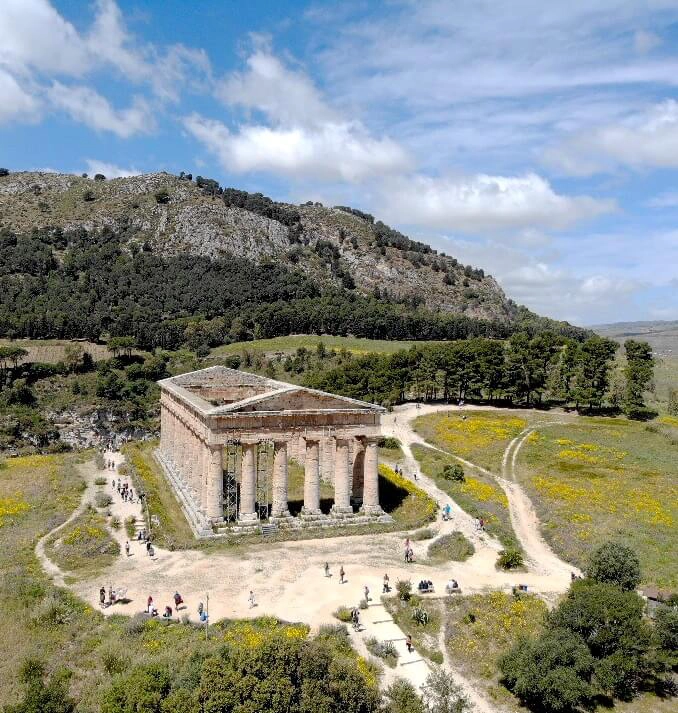
From here, head back to the ticket office, over the fairly new road and uphill towards the Roman amphitheatre at the top of Mount Barbaro. It is entirely possible to take the path up ( a brisk 30 minute walk) through wildflowers and grasses and with spectacular views of the temple.
You can also catch a small shuttle bus for an additional €0.50, which takes around five minutes. Perhaps take the shuttle up and walk down as you don’t want to miss the views, which are some of the best in Sicily.
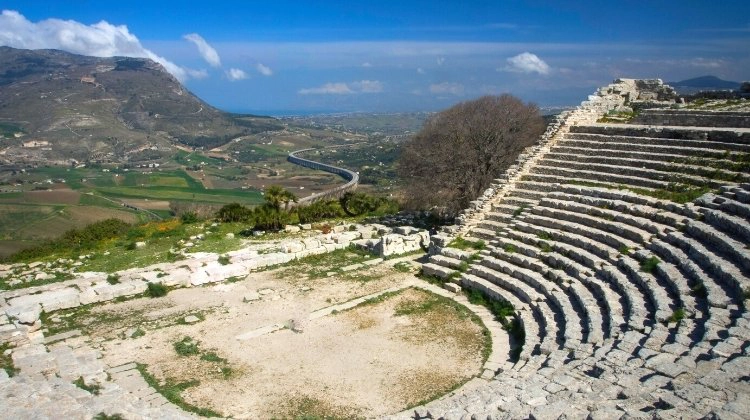
The Segesta Experience
Segesta is a magical place and our favourite ancient Greek site in Sicily. The setting, between lush rolling hills, with far distant views of the sea and mountains, is perfection. The surrounding fields, with their exact rows of silver-green olive trees and vines, are archetypal Italian and just add to the atmosphere of the site.
The architecture of both temple and amphitheatre is breathtaking. The temple is particularly interesting due to its unfinished nature and complexity. It is amazing that it has survived as intact as it is given that until just a few years ago, visitors were able to walk inside and around the columns.
Other Sicilian archaeological sites and places of interest that you may want to visit;
- Valley of the Temples, Agrigento
- Temples of Selinunte, Marinella di Selinunte
- The Greek Theatre at Taormina
- Villa Romana del Casale, Piazza Armerina
Are you looking for more Italian travel inspiration? Check out these top posts…
A Bucket List Amalfi Coast Road Trip
Driving to Italy from UK – Routes & Tips
The Ultimate Bucket List Italy Road Trip
Beautiful Puglia – A Road Trip Itinerary
How to Visit Pompeii & Vesuvius in One Day
The Best of Rome in 36 Hours
Love it? Pin it!
